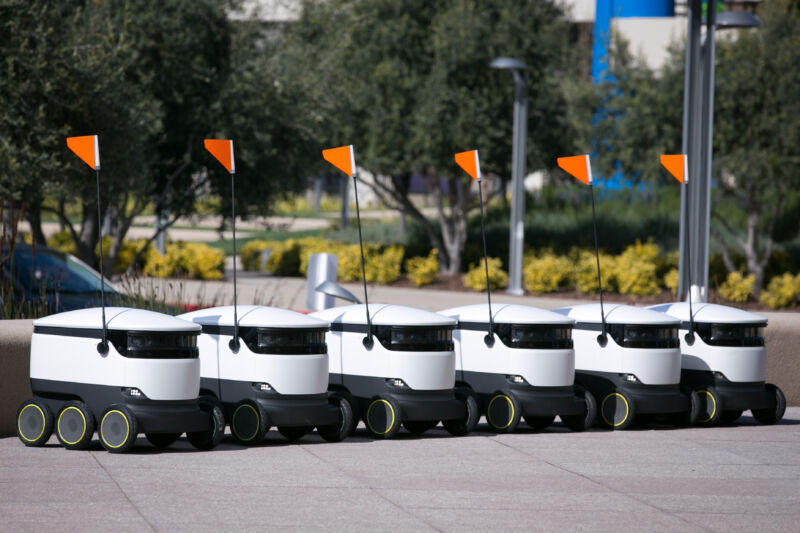The pandemic is bringing us closer to our robot takeout future

Enlarge (credit: Starship)
On the morning of March 30, I set out from my home in Washington, DC, to the campus of George Mason University in Fairfax, Virginia. In only a few hours, DC Mayor Muriel Bowser and Virginia Governor Ralph Northam would issue coordinated stay-at-home orders. But I was going to GMU's campus to check out a new technology seemingly tailor-made for the moment-technology that could help people get food without the risks of face-to-face interactions.
Campus was eerily quiet; most students and staff had long been sent home. But as I approached a Starbucks at the northern edge of GMU, I heard a faint buzzing and saw a six-wheeled, microwave-sized robot zip along the sidewalk, turn, and park in front of the coffee shop. The robot looked like-and essentially was-a large white cooler on wheels. It was a delivery robot from Starship, a startup that has been operating on campus since early last year.
Even before the COVID-19 pandemic, small sidewalk robots like this seemed to be slowly gaining traction here and at large. Generally, these bots are light and slow-moving enough that they're unlikely to hurt anyone. That has allowed companies to start using them in real-world applications, with minimal supervision, at a time when larger autonomous vehicles designed for road use still seem far from mainstream commercial use.
Read 38 remaining paragraphs | Comments